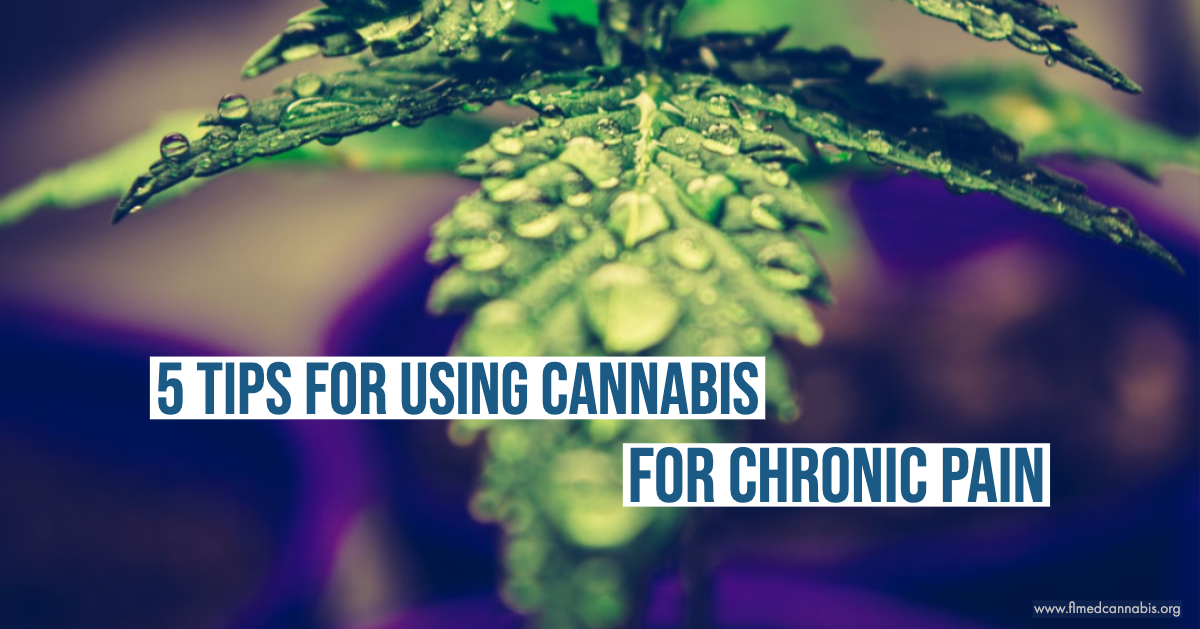Chronic pain is the number one source of disability in the United States affecting over 100 million American’s daily, with women affected disproportionately. According to our patient surveys, over 60 percent of patients in our practice are using cannabis to address chronic pain.
So what exactly is chronic pain? Chronic pain is defined as pain persisting 3 months or more. The experience of chronic pain affects more than just the physical world - it’s incredibly stressful. Patients with chronic pain are prone to higher rates of depression, anxiety, and insomnia. Conventional pain management methods, like opiates, overwhelmingly don’t work and often come with debilitating side effects and risks. Fortunately, in Florida (and 32 other states) cannabis is an available option for patients.
Here at Florida Medical Cannabis Clinic, we’ve been witness to the life changing transformations that happen when patients are able to better control their chronic pain through medical cannabis. Many patients are able to reduce or come off of traditional pharmaceuticals, lose weight, regain activity, and experience a quality of life they no longer saw possible for themselves. Here are our 5 top tips for using cannabis for chronic pain.
Don’t ignore CBD.
Patients often jump to THC dominant products for chronic pain, assuming the higher “potency” means better pain relief, but this isn’t always the case. Adding in CBD along with your THC can help to achieve better pain relief. In many cases patients find honing in their CBD:THC ratio will require them to use less THC to get the same benefits, as CBD helps to increase the therapeutic window. CBD also has powerful anti-inflammatory properties, with inflammation being an underlying process in many chronic pain syndromes. If you aren’t currently taking any, try adding in a cannabis derived oral CBD tincture (with fat) 2-3x per day. CBD has cumulative effects, with most patients finding benefit within 4-6 weeks of regular consumption.
More isn’t always better.
Many patients, and some research, suggests that consistently microdosing cannabis may be the best approach to controlling pain. Cannabinoid receptors can become overstimulated by repeated high doses of cannabis, causing them to become less sensitive and responsive. As tolerance increases, so does the potential for the return of uncomfortable symptoms. Microdosing, or taking very small, non psychoactive doses of cannabis, helps to keep these receptors from becoming oversaturated, while providing a consistent therapeutic baseline. This allows patients to reserve higher doses for severe flare ups only, without the same potential for a rapidly increasing tolerance.
Learning how to tune into your body is more important than products that work best for others.
As a cannabis patient it’s easy to be overwhelmed by all of the available strains, products, and delivery methods on the market. If you ask 10 people the best cannabis product for pain, you are likely to be met with 10 different responses. Instead of focusing on tracking down the ultimate medicine, learn how to tune into your body and use it as a tool for guiding your cannabis choices forward. Using a cannabis journal or taking regular inner inventories are helpful methods for increasing body awareness.
Focus on your sleep.
Sleep is one of the most debilitating components to life with chronic pain. When we’re in pain it’s difficult to sleep and when we don’t sleep our pain increases. It’s an endless cycle. Fortunately, sleep is a relatively easy area for most patients to dial in when it comes to cannabis. THC rich strains dominant in the terpenes myrcene and linalool (normally labelled indica) tend to produce the best sedation effects. They tend to be calming, while helping both muscles and mind to relax and unwind. Many patients prefer oral dosing for the long acting (6-8 hours) effects. Strains or products rich in the cannabinoid CBN may also help with sleep as it’s known for it’s sedating, walking through mud, type effect.
Use a variety of delivery methods.
Chronic pain has many layers and different types. Taking a multi-faceted approach, both within cannabis and outside of it, can help patients better control their pain while feeling better overall. Many patients find great relief adding in cannabis topicals for breakthrough pain or transdermal patches during severe flare ups. You can also incorporate cannabis’ psychoactivity and relaxation properties into meditation, yoga, and other mind body pain management practices. Experiment with a variety of methods and products until you find the best combination for your needs.
Post Written By: Kristina Risola, Cannabis Health Coach




